My Favorite Hotels in Tokyo
- 5-Star: Four Seasons Marunouchi
- 4-Star: Shibuya Stream
- 3-Star: Sunroute Plaza Shinjuku
- For Families: Saunaland Asakusa
- For Couples: TRUNK (Hotel)
- Best Pool: Grand Hyatt
- Tokyo Station: The Tokyo Station Hotel
- Disney Resort: Hilton Tokyo Bay
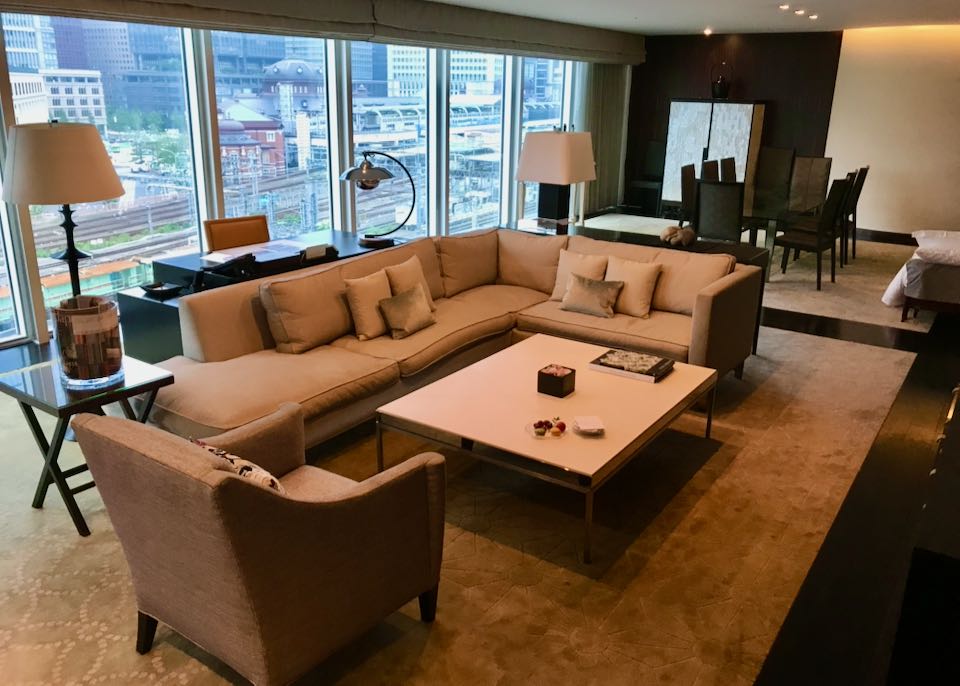
Our suite at the fantastic Four Seasons Marunouchi, overlooking Tokyo Station. (Currently closed for renovations until March 2026.)
Tokyo Hotels – My Advice
- Best Luxury Hotels in Tokyo:
Four Seasons • Park Hyatt • The Peninsula • Mandarin Oriental- Best Boutique Hotels in Tokyo:
TRUNK • Andaz- Best Ryokan in Tokyo:
Hoshinoya • Asakusa Shigetsu- Best Midrange Hotels in Tokyo:
Tokyu Stay Shibuya • Sunroute Plaza Shinjuku- Best Family Hotels in Tokyo:
Four Seasons • Asakusa View • Rose Garden Shinjuku
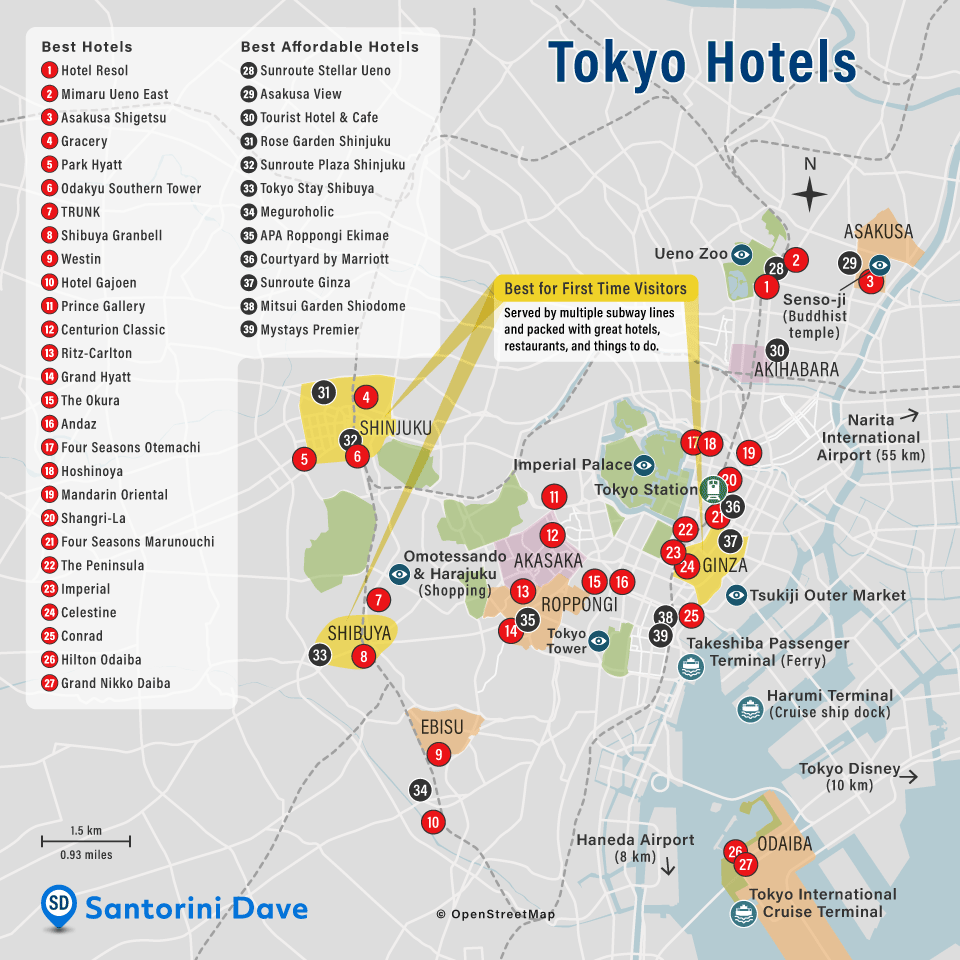
Best Hotels: 1. Hotel Resol • 2. Mimaru Ueno East • 3. Asakusa Shigetsu • 4. Gracery • 5. Park Hyatt (closed for renovations) • 6. Odakyu Southern Tower • 7. TRUNK • 8. Shibuya Granbell • 9. Westin • 10. Hotel Gajoen • 11. Prince Gallery • 12. Centurion Classic • 13. Ritz-Carlton • 14. Grand Hyatt • 15. The Okura • 16. Andaz • 17. Four Seasons Otemachi • 18. Hoshinoya • 19. Mandarin Oriental • 20. Shangri-La • 21. Four Seasons Marunouchi • 22. The Peninsula • 23. Imperial • 24. Celestine • 25. Conrad • 26. Hilton Odaiba • 27. Grand Nikko Daiba
Best Affordable Hotels: 28. Sunroute Stellar Ueno • 29. Asakusa View • 30. Tourist Hotel & Cafe • 31. Rose Garden Shinjuku • 32. Sunroute Plaza Shinjuku • 33. Tokyo Stay Shibuya • 34. Meguroholic • 35. APA Roppongi Ekimae • 36. Courtyard by Marriott • 37. Sunroute Ginza • 38. Mitsui Garden Shiodome • 39. Mystays Premier
The 16 Best Hotels in Tokyo
1. Four Seasons – Marunouchi
This is my favorite hotel in Tokyo. With only 57 rooms, it could be considered a boutique hotel – offering intimacy and great, personalized service. With a convenient location near Tokyo Station, the hotel has a free “greeting” service at the station, or, for a fee, even at Narita Airport. An ultra-contemporary property, the rooms are large and high-tech, but views from floor-to-ceiling windows are confined to surrounding buildings or bullet trains pulling in to the station. Facilities include a spa with Japanese baths (which are fantastic), fitness gym, and a farm-to-table French restaurant with views of Tokyo Station. (Currently closed for renovations until March 2026.)2. Mandarin Oriental – Nihonbashi
The lone luxury property in the historic Nihonbashi district, once home to merchants and now to the Tokyo Stock Exchange and venerable Mitsukoshi department store, the Mandarin Oriental wins kudos for its three Michelin-starred restaurants and its lavish décor that includes textiles and weavings created expressly for the hotel by artisans across Japan using age-old techniques handed down for generations. Rooms, on the 30th to 36th floors, provide views of the surrounding city, including those of SkyTree, Tokyo Bay, Imperial Palace gardens or Mount Fuji, but the Hong Kong transplant also offers characteristics of its sister property, including a delivery box at room entrances so that shoes cleaned complimentarily or laundry can be returned without disturbing guests.3. Park Hyatt Tokyo – Shinjuku
Whereas the Grand Hyatt attracts a clientele that enjoys being in the middle of the action, the Park Hyatt cultivates a lower profile, buffered from the hustle and bustle of Tokyo by its slightly out-of-the-way location in west Shinjuku, remedied, naturally, by a free 5-minute shuttle bus to Shinjuku Station. Gaining worldwide fame after its debut in Lost in Translation, the hotel has gorgeous rooms, all with stunning views (those facing east toward Shinjuku’s night lights are the most popular) and walk-in closets. Hotel highlights include a 2,000-book library, the ever-popular New York Grill with its famed weekend brunch and expansive list of Californian wines (including hard-to-find vintages), free use of bicycles, spa and fitness facilities that include sun-lit lap pool and gym offering yoga and other classes all free of charge.4. The Peninsula – Hibiya
The Peninsula Tokyo features an understated Zen-like atmosphere nevertheless resplendent with eye-catching contemporary artwork. Rooms are humongous, with tubs big enough for two, but outstanding service is what elevates this great hotel to one of Japan’s best, with a Rolls Royce that delivers guests within a 1.2-mile radius, bicycles for exploring the neighborhood, and a with health club an indoor pool and outdoor terrace, all available to hotel guests free of charge.5. Conrad Tokyo – Shiodome
With its location near the Ginza, artwork by 23 leading Japanese craftsmen, sleek contemporary design and one of the city’s largest spa and fitness centers, this hotel is one of Tokyo’s best. Although guests can save money by staying in a room facing inland, it would be a shame to miss the superb panoramic views offered by the more expensive bayside rooms, which overlook Hama Rikyu Garden toward the bay and Odaiba and are made even more inviting with couches that extend the full length of wall-to-wall windows.6. Grand Hyatt Tokyo – Roppongi
The stylish Grand Hyatt Tokyo is located in Roppongi Hills, which is like a city-within-a-city with its 200-some boutiques and restaurants, multi-screen cinema, the avant-garde Mori Art Museum on the 53rd floor, and a heart-stopping rooftop observatory. That’s on top of what the hotel itself offers, including 11 restaurants and bars, and a fitness club with an indoor pool and spa. Rooms are spacious and thoughtfully designed, with oversize desks, button-controlled blackout blinds and huge bathrooms that take up a full quarter of room space, making this a comfortable home-away-from-home. The Grand Hyatt is one of the most family-friendly hotels in Tokyo.7. Park Hotel Tokyo – Shiodome
Art-filled hotel near Ginza with 7 galleries spread over several floors, excellent Japanese and French dining, and a sophisticated whiskey and scotch bar. Choose a room on the Art Floor and be surrounded by one-of-a-kind murals by Japanese Artists-in-Residence, such as the Public Bathhouse room seen here. Art Floor perks include complimentary evening wine and liquor, all-day non-alcoholic drinks, and morning pastries.8. Odakyu Hotel Century Southern Tower – Shinjuku
Travelers who can’t afford the Park Hyatt but still want that Lost in Translation hotel experience find the Century Southern Tower a worthy alternative. Occupying the 20th to 35th floors of an office building near Shinjuku Station and the Takashimaya Times Square shopping complex, it offers simply furnished rooms (90% of which are non-smoking) that make up for their small size with expansive views, with those facing east toward Shinjuku Park and the city’s night lights considered the best. The skyline maps identifying landmarks visible from your room are fun.9. Prince Gallery Tokyo Kioicho – Akasaka
Stylish hotel with a full-service spa, indoor heated pool, Japanese and Western restaurants, and a romantic cocktail bar with expansive city views. Generously sized rooms and suites feature separate showers and bathtubs. Great location in Akasaka, near dining, bars, and linked to Nagatacho subway station.10. The Ritz-Carlton – Roppongi
Views are what set this deluxe property apart because although there are many skyscraper hotels in the city, none are as high as this with views in all compass directions. Ensconced in Tokyo’s second-tallest building, which towers above Tokyo Midtown with its shops and restaurants in the nightlife district of Roppongi, the hotel offers first-rate restaurants (those serving contemporary French fare and Japanese cuisine are among the best in town), free access to its health club with an indoor lap pool, and some of Tokyo’s largest guest rooms at 560 square feet, with choices of eye-popping views of Mt. Fuji, the Imperial Palace gardens or Tokyo Tower. As expected, the hotel is beautifully appointed, and the service is among the best anywhere.11. Shangri-La – Tokyo Station
With an enviable location right next to Tokyo Station, making it a top place to stay if quick and easy access to Narita airport or the Shinkansen is a priority, the Shangri-La spared no expense in its design and décor, which includes 2,000 works of art and lavish appointments. Rooms are among the largest in Tokyo, there’s a spa and health club complete with indoor pool, and the hotel offers a complimentary meet-and-greet escort service from Tokyo Station to the hotel lobby.12. Imperial Hotel Tokyo – Hibiya
Tokyo doesn’t have a grand old hotel, but the Imperial, first opened in 1890 and rebuilt by Frank Lloyd Wright, comes close. Unfortunately, a 1970 expansion and makeover signaled the demise of the former Art Deco masterpiece, but the famed architect’s legacy can be found in the Old Imperial bar and Wright-inspired designs. The hotel is highly respected among Japanese, evident in the huge popularity of its 13 restaurants, bustling lounge and underground shopping center. Rooms are split between the main building and a 31-story tower, the latter preferred by international guests for its higher (and therefore better) city views and closer proximity to the hotel pool and gym. The hotel is walking distance to both Ginza and Tokyo Station.13. Hilton Tokyo – Odaiba
The best hotel in Odaiba. With Haneda International Airport offering an increasing number of long-distance flights from the US and elsewhere and only a 20-minute ride away, this vacation destination has lots going for it. When factoring in its location in Odaiba and proximity to museums, shopping centers, Ooedo-Onsen Monogatari hot-spring baths, and many kid-friendly attractions it might be worth the 15-minute train ride from central Tokyo. The hotel has an indoor pool (though extra charges apply) and wonderful views of Tokyo and Rainbow Bridge. Also, this is likely the best hotel in Tokyo for seeing the Olympic Games as many popular events will be held on Odaiba.14. Okura Tokyo – Minato
This iconic luxury hotel has recently re-opened after a long renovation. Facilities include a holistic spa featuring Japanese treatments and French products, a high-end gym with a lap pool, exceptional restaurants and bars, and tastefully decorated rooms with plenty of space. Expect impeccable service and a refined aesthetic.15. Hoshinoya – Otemachi
More luxurious (and more expensive) than traditional ryokan the Hoshinoya is the best boutique ryokan in Tokyo. There’s a zen-vibe throughout, indoor/outdoor Japanese bath on the top floor, and one of the best restaurants in Japan that’s reserved for hotel guests only. Another plus: hotel is directly connected to Otemachi subway station through the basement.16. Asakusa View Hotel – Asakusa
Good value hotel with rooms ranging from inexpensive singles to 4-bed deluxe quadruples. Asakusa is considered one of the “old downtown” neighborhoods of Tokyo, but there aren’t many hotel options in this tourist hotspot, making the Asakusa View Hotel one of the best bets for visitors wishing to be within walking distance of famous Sensoji Temple. Some rooms have marvelous views of the Skytree tower and Sumida river.Tokyo Neighborhoods
Tokyo’s immense size of 13 million people (37 million including the surrounding metropolitan area) can give even seasoned travelers pause. But there are many pluses that make this adrenalin-charged capital both navigable and rewarding, including an efficient and excellent public transportation system, a ranking as one of the safest cities in the world, and a people who are hospitable and kind. It helps to think of Tokyo as nothing more than a patchwork of many unique and distinct neighborhoods, most with origins stretching back to the days of the shogun. Of course, you will get lost. Heck, even the Japanese get lost. But in a country where walking the streets can be considered a cultural experience, getting lost can be considered part of the adventure.
Tokyo Hotels – 15 Tips & Things to Know
- Best Hotels in Central Tokyo: Defining central Tokyo is difficult. I would consider all the hotels listed here to be located in central Tokyo but I think tourists would do best to consider the hotels’ proximity to a subway station and specific sights and not worry about being centrally located which doesn’t mean much in sprawling Tokyo.
- There is no clear first choice in neighborhood when it comes to where to stay, as top attractions are spread throughout town and transportation by subway or JR commuter train gets you anywhere you want to go.
- If you need a hotel with quick and easy access to Narita International Airport or the Shinkansen bullet train, stay near Tokyo Station. Marunouchi, extending west of the station’s historic brick façade, is an up-and-coming urban destination, with tree-lined streets, outdoor artwork, designer boutiques, and restaurants in all price categories. The most convenient hotels to Tokyo Station are the Tokyo Station Hotel, Four Seasons Hotel at Marunouchi and the Shangri La Hotel Tokyo – all are attached to or just outside the station and an easy walk from the Shinkansen and airport trains.
- For rooms with expansive views, head to where skyscrapers host hotels on their highest floors, including Shinjuku, Marunouchi, Roppongi, Shiodome, Shibuya, Nihombashi, and other central business districts.
- Asakusa and Ueno are two of Tokyo’s old “downtown” neighborhoods, full of centuries-old shops and restaurants that make them best bets for travelers seeking a traditional atmosphere. At the opposite end of the spectrum is the Ginza, with swanky designer boutiques, art galleries and tony restaurants.
- Night revelers who want to be close to the action should stay in Roppongi, Shinjuku, or Shibuya, all with restaurants, bars, and dance clubs that stay open late.
- Fashionistas and foodies will find plenty of diversions along the winding streets of Omotesando, home to stores selling international and Japanese designer wear and to some of Tokyo’s trendiest restaurants and cafes.
- Although it doesn’t provide discounts, the Suica card goes a long way toward making travel in Tokyo easier. The prepaid card, available at major JR East stations like Tokyo, Shinjuku, Ueno, and Shibuya, means you don’t have to buy individual tickets when boarding the city’s JR trains, subways and buses. That alone is worth the Suica, but it can also be used for purchases from designated vending machines, at convenience stores and for snacks aboard JR long-distance trains.
- Avoid rush hour, but if you must, know that there are subway cars designated only for women weekdays until 9am.
- Taxis with a red light above the dashboard, showing they’re free to pick up passengers, can be hailed from almost any street. Driving is on the left side; the left rear door is operated automatically by the driver, so don’t try to open or close it on your own.
- There’s no tipping in Japan, whether it’s the bellhop, taxi driver, or waitress. Rather, a 10 to 15% service charge is added to higher-priced restaurants and hotels. In addition, an 8% consumption tax is imposed on goods and services, including hotels and restaurants. As for goods, including consumables, foreign visitors are entitled to a refund of the consumption tax if they are taken out of the country within a certain amount of time and cost more than a minimum amount, but note that only department stores and shops used to dealing with foreigners offer the refund, minus a 1.1% handling fee charged by most establishments.
- Stand on the left side when riding escalators so that those in a hurry can pass on the right. In Osaka, Kyoto, and other cities in the Kansai area, commuters do the opposite and stand on the right.
- You can save money by eating your biggest meal at lunch, when many restaurants – even exclusive ones – usually offer a set meal that may include an appetizer, entrée and side dishes, tea or coffee, and sometimes dessert.
- Last entry to museums, gardens, and attractions is usually 30 minutes before the actual closing time. Public museums are usually closed on Monday, but if Monday is a holiday they stay open and close on Tuesday instead. Private museums, however, are usually closed on public holidays.
- Several wards and neighborhoods offer free Wi-Fi hotspots, including Ginza, Marunouchi, and Shibuya, mostly along major thoroughfares or from iconic buildings.
GINZA HOTELS
• Best Hotel: The Celestine Ginza
• Best Cheap Hotel: Hotel Sunroute GinzaGinza is Japan’s swankiest and most famous shopping district, comparable to Paris’ Champs-Elysees or New York’s Fifth Avenue. Home to department stores, art galleries, international name-brand boutiques, upscale restaurants, sophisticated bars, and specialty shops, Ginza draws well-heeled Japanese and international visitors, including busloads of Chinese tourists eager to buy designer goods.
Ginza’s name translates as “silver mint,” after a mint that created silver coins for the shogun. After Japan opened to foreign trade in the 1860s following two centuries of self-imposed isolation, Ginza emerged as the most Westernized district in the country, with brick sidewalks, gas streetlamps, cafes modeled after those in Paris and shops selling beef, ice cream, Western clothing, and other exotic goods.
While Ginza today lacks the intimacy of neighborhoods like Asakusa, and young Tokyoites are more likely to favor Omotesando and Shibuya, Ginza appeals to those who like world-class shopping and dining close at hand. In addition, served with seven subway lines and JR’s Yamanote Line loop, attractions elsewhere are easily reached. Ginza Dori (also called Chuo Dori) and Harumi Dori are its main thoroughfares, lined with department stores like Matsuya, Mitsukoshi, and Wako, the latter famous for its clock tower and innovative window displays. There are also hundreds of specialty shops, like Ando, selling cloisonné since 1880, and Shisedo, opened as Japan’s first Western-style pharmacy in 1872 and renowned for its beauty products. Modern additions like the Sony Building and Apple display their latest products.
Kabukiza opened in 1889 as Tokyo’s premier kabuki theater, but more entertainment in the form of bars and restaurants can be found along small lanes like Namiki Dori. Restaurants offer everything from sushi and steaks to French cuisine, often with hefty prices to match. There may no longer be a silver mint in Ginza, but the coins keep rolling in.
MARUNOUCHI HOTELS
• Best Hotel: Four Seasons Hotel Tokyo
• Best Cheap Hotel: Courtyard by Marriott Tokyo StationLocated between Tokyo Station and the Imperial Palace, Marunouchi is one of Japan’s most important commercial and financial districts. Just a few decades ago, it was bleak and boring, with mostly office buildings and little to attract visitors. Since the turn of this century, however, Marunouchi has been revitalized, thanks mostly to Mitsubishi, which owns much of the land and has its headquarters here. There are skyscrapers chock-full with restaurants, shops, and multi-national corporations, luxury hotels and designer boutiques. Tokyo Station’s Marunouchi side, with a splendid 1914 Renaissance-style brick façade, provides quick and easy access to Narita Airport and the rest of Japan and contains a Travel Service Center catering specifically to foreigners with train information for all of Japan.
The area’s most defining character is the Imperial Palace, home to the Imperial family. It was in the adjoining East Garden that the story of Tokyo began, when the first shogun of Edo (present-day Tokyo) built his magnificent castle here in the early 1600s. Today, the East Garden with castle remnants and landscaped grounds is an urban haven, while the three-mile promenade around the palace’s circular moat is popular with joggers.
Otherwise, there’s no mistaking you’re in the midst of a large city. At Marunouchi’s core is tree and artwork-lined Marunouchi Naka Dori, famous for its winter illuminations and home to a Tourist Information Center, high-end stores like Armani and Tiffany, cafes, and Mitsubishi Ichigokan, built in 1894 and housing a museum for 19th-century Western art. On the first and third Sunday of each month, the Oedo Antique Fair is held in nearby Tokyo International Forum’s courtyard. For sightseers, the Sky Bus Tokyo provides a 45-minute run around the Imperial Palace and through Marunouchi and Ginza. Both the Marunouchi and Shin-Marunouchi buildings have restaurants with views of the station or over the city, while the most sophisticated night venue is the Cotton Club, featuring world-class jazz performances.
ASAKUSA HOTELS
• Best Hotel: Ryokan Asakusa Shigetsu
• Best Midrange Hotel: Asakusa ViewWith its narrow streets, modest homes, and quaint shops selling boxwood combs, fans and other traditional crafts, Asakusa seems like a village far removed from central Tokyo. Together with Ueno, Asakusa reminds Tokyoites of the city’s old shitamachi (downtown) atmosphere more than anywhere else in town. But it’s also one of Japan’s most popular destinations, primarily because of Sensoji Temple, founded in the 7th century. About 30 million visitors flock here annually, imparting a festive atmosphere every day of the year.
Nakamise Dori is the pedestrian lane leading to the temple, lined with stalls that sell crafts, souvenirs and kitsch, including yukata (Japanese sleepwear), crackers, umbrellas, hair accessories, key chains, fake tattoos, toys and much more. Venture off the beaten path, however, and you instantly find yourself on quiet streets that might be graced with pruned bonsai, the well-tended entrance to a Japanese inn or short curtains signaling a restaurant, like Waentei-kikko, which occupies a small traditional house and offers box lunches and live shamisen performances.
Next to the temple is the Amuse Museum, which houses an amazing private collection of clothing from the Edo Period (1603-1868), antiques and more, with a 6th-floor bar providing night views of an illuminated Sensoji Temple. Chefs and chef wannabes will find the 15-minute hike to Kappabashi-dougugai Dori worth it, for shops here specialize in everything a restaurant needs, including woks, aprons, lacquered trays, disposable chopsticks and even mouthwatering plastic food renditions. A 15-minute walk (or short subway ride) in the other direction is Tokyo SkyTree, Japan’s tallest structure, with an observatory and restaurant providing heart-stopping views.
While Asakusa’s location in northeast central Tokyo is a bit out of the way from central Tokyo and has little in the way of nightlife, it’s ideal for travelers seeking a more traditional experience and is a convenient gateway for train travel to Nikko.
UENO HOTELS
• Best Hotel: Mimaru Tokyo Ueno East
• Best Midrange Hotel: Hotel Sunroute Stellar UenoIn contrast to the sophistication of Ginza, Ueno has always been working class, even during the days of the shogun when it was home to merchants, craftsmen, and townspeople. Together with nearby Asakusa, it retains some of its old shitamachi (downtown) atmosphere, a bit rough around the edges, especially at its lively Ameya Yokocho street market, which originated as a black market after World War II and offers food, clothing, and accessories under and around the Yamanote train tracks.
Located on the northeast end of the convenient Yamanote Line loop (and with easy access to Narita Airport), Ueno’s biggest draw is Ueno Park, one of the most popular destinations for Japanese families due to its zoo, green spaces and cluster of museums, most notably the Tokyo National Museum with the largest collection of Japanese antiques and art in the world. Ueno Park is also famous for its cherry blossoms, which bring in droves of sightseers. On the downside, since Japan’s economic bubble burst in the early 1990s, Ueno Park and its periphery have attracted the homeless, with a soup kitchen operating on Saturdays. Tokyo, however, ranks among the safest cities in the world, and for the most part Japan’s homeless keep to themselves.
Just outside the park are marshy Shinobazu Pond with its bird refuge and the Shitamachi Museum, which preserves the lifestyle of Tokyo’s Edo-era commoners. The best place for exploration is Yanaka just north of Ueno, which boasts more temples than any other place in Tokyo, most dating from the Edo Period. Ueno abounds in traditional restaurants, many with long histories, like Innsyoutei in Ueno Park, serving kaiseki and box lunches since 1875, and Unagi Kappo Izu’ei, offering grilled eel for more than 265 years. Ueno isn’t known for its nightlife, but Warrior Celt offers live music several nights of the week and stays open until the wee hours.
SHINJUKU HOTELS
• Best Hotel: Odakyu Hotel Century Southern Tower
• Best Midrange Hotel: Sunroute Plaza ShinjukuLocated on the western end of the Yamanote Line loop, Shinjuku is home to Shinjuku Station, Japan’s busiest commuter station with about 3.5 million passengers coming through daily. Surrounding the station is everything to meet commuters’ needs, including restaurants, bars, pachinko parlors, department stores, convenience stores, and specialty shops. Because of its many hotels, many visitors stay in Shinjuku, with JR lines, subways, and private railways providing easy access to the rest of Tokyo and beyond, including the private Odakyu line with service to Hakone.
Serving travelers has been Shinjuku’s role from the beginning when it originated as a post town in 1698 for feudal lords and their samurai retainers making the trek between Edo and homes in the provinces. It remained an isolated outpost until the 1923 Great Kanto Earthquake when Tokyo’s widespread destruction convinced businesses to relocate here. Japan’s first skyscraper was erected here in 1971; when the Tokyo Metropolitan Government (TMG) relocated here 20 years later, Shinjuku’s transformation into a business hub was complete.
Today, Shinjuku Station divides Shinjuku into distinct east and west sides, different as night and day. The west side is respectable and somewhat stodgy, home to several department stores, several streets lined with electronics stores, the TMG (with a tourist office and free observatory) and Tokyo’s largest concentration of skyscrapers (many with restaurants on their top floors), which create windy urban canyons; commuters tend to stick to underground passageways.
Eastern Shinjuku is known for its shopping and nightlife, most notorious of which is Kabuki-cho with its hostess bars, strip clubs, dance halls, cubby-hole eateries and restaurants. Farther east are Golden Gai, a warren of narrow alleys and ramshackle tiny bars favored by musicians, writers and celebrities, and Shinjuku 2-chome, Japan’s premier gay nightlife district with 300-some establishments. Nearby is Shinjuku Gyoen Park, a tranquil oasis with a Japanese garden at its center, providing respite from Shinjuku’s madness.
SHIBUYA HOTELS
• Best Hotel: TRUNK • Shibuya Granbell Hotel
• Best Midrange Hotel: Tokyu Stay ShibuyaShibuya is famous throughout Japan because of Hachiko, a dog that waited at the Station every day for his master’s return from work, even after the professor died in the mid-1920s. A bronze statue of the Akita stands outside the station’s Hachiko Exit, now a popular waiting place for friends meeting up in Shibuya. Just past Hachiko is Shibuya Crossing, one of the most famous intersections in the world with its giant video screens, neon advertisements, and hordes of pedestrians converging from all directions when the lights change, captured in films like Lost in Translation.
Located on the southwestern end of the Yamanote Line loop, Shibuya is one of Tokyo’s most important commuter hubs, serving Yokohama and regions to the southwest. Shibuya Station is in the midst of massive renovations that will extend into the 2020s; until complete, navigating current construction can be somewhat frustrating.
Shibuya is immensely popular with students, young office workers, and professionals, some of whom work in Shibuya’s burgeoning IT industry. In 2015, Shibuya ward became the first place in Japan to recognize same-sex partnerships. More down to earth than uber-cool Omotesando and with a less frenetic nightlife than Roppongi’s, Shibuya has a healthy mix of both shopping and entertainment, giving it vibrancy both day and night. It’s a shopper’s paradise for fashion and interior design, with an impressive concentration of specialty department stores. The 109 fashion building has been setting trends for more than 35 years, while Tokyu Hands for the homeowner and hobbyist carries everything from picnic to office supplies. Spain Slope, a narrow and winding pedestrian lane lined with boutiques and restaurants, is the quintessential Shibuya shopping street, but there’s also the 34-story Hikarie, with shopping, dining and entertainment geared toward older commuters.
ROPPONGI HOTELS
• Best Hotels: Grand Hyatt • Ritz Carlton Tokyo
• Best Midrange Hotels: APA HotelCentrally located, Roppongi has been popular for decades as one of Tokyo’s premier nightlife meccas for Japanese and foreign revelers in their 20s and 30s. Compact in size, it has the largest concentration of bars, restaurants, dance clubs, hostess clubs and strip joints of any district outside Shinjuku. Although packed in the evening, until recently it was empty by day, scruffy and with little to recommend it, despite the fact that many embassies, national corporations, and expat residences are located in the area.
Things began to change in 2003, when the 28-acre Roppongi Hills opened as Tokyo’s largest urban development, complete with 230 shops and restaurants, offices, apartments, a Japanese garden, movie theaters, a luxury hotel and a 54-story building with the Mori Art Museum occupying its top floors and an outdoor observation platform on its roof. In 2007, Tokyo Midtown opened nearby with many of the same facilities, as well as the Suntory Museum of Art with its changing exhibits of Japanese art and antiquities. With the opening of the National Art Center showing changing exhibits of contemporary art, which together with the Mori and Suntory art museums created what is known as Art Triangle, Roppongi became a destination for day-trippers. Meanwhile, the addition of luxury hotels infused the area with an older international crowd, which in turn brought sophisticated cocktail bars and tony restaurants.
Today’s Roppongi is respectable, catering to both business types and young revelers, with bars both sleazy and sleek and restaurants serving international cuisines in all price categories. What sets Roppongi apart compared to other nightlife districts like Shinjuku is that it’s very accessible not only to Japanese but also to expats and foreign visitors, with English-speaking staff, English menus and even expat-owned venues. Roppongi is still rowdy at night, making it an attractive place to stay for night owls who like being in the thick of it, but quiet backstreets and a growing roster of shops, restaurants and other diversions make it also interesting to explore by day.
OMOTESANDO HOTELS
• Best Hotel: Tokyu Stay Aoyama Premier
Whereas Shibuya and Shinjuku haul in the crowds because they’re commuter hubs, Omotesando is a destination in its own right, with a reputation that places it squarely in top position as Tokyo’s hippest neighborhood. The name also of a subway stop, Omotesando is actually a wide, zelkova-lined avenue that connects Harajuku and Aoyama, two neighborhoods that have fused since the gentrification of Omotesando. The area’s laid-back atmosphere, with homey cafes, one-of-a-kind boutiques, and ethnic restaurants tucked along twisting narrow alleys, make it one of the city’s most relaxing getaways. For Tokyoites who can afford to live here, it’s also one of the city’s most posh addresses.
Omotesando is home to flagship fashion houses, from Tod’s and Louis Vuitton to Prada, to the upscale Omotesando Hills shopping complex and to Oriental Bazaar, Tokyo’s largest one-stop store for Japanese crafts and souvenirs. On weekends, sidewalk vendors lay out jewelry and trinkets for the steady stream of passersby. Sidewalk cafes make this Tokyo’s best place for people watching, with Omotesando a runway for designer wear, edgy local creations, and funky street styles of the moment.
Harajuku, at the west end of Omotesando, is anchored by venerable Meiji Jingu Shrine, erected in 1920 to pay homage to the emperor who ushered Japan into the industrial age and surrounded by dense forest. Otherwise, Harajuku is teenybopper heaven, with narrow lane Takeshita Dori the epicenter for shops offering inexpensive clothing and accessories; it’s usually so packed on weekends that it’s a virtual human traffic jam.
On the downside, Omotesando and Harajuku have little nightlife and few hotels, but both Shibuya and Roppongi are a short bus or taxi ride away.
At the eastern end of Omotesando is Aoyama, which attracts a yuppie crowd with its chic restaurants and homegrown fashion houses like Issey Miyake, Commes des Garcons, and A Bathing Ape. Here, too, is the Nezu Museum, a showcase for Asian art and with its own private garden.
AKIHABARA HOTELS
• Best Hotel: Hotel Resol Akihabara
• Best Midrange Hotel: Tourist Hotel & Cafe AkihabaraLocated between Tokyo and Ueno stations on the useful Yamanote Line loop, Akihabara is all about consumerism, with signs, displays, posters and other advertisements creating a visual extravaganza of color along Chuo Dori, the main thoroughfare, and its side streets. Until recently, Akihabara was known as Akihabara Electric Town for its role as the largest shopping district in Japan for electronics and electrical appliances, packed with big stores and cubby-hole-size stalls selling calculators, TVs, watches, cameras, rice cookers, audio devices and then, toward the end of the century, computers and later mobile phones.
It was the computers that brought in young nerds (otaku in Japanese) and with them a growing number of shops specializing in hobbies otaku love—namely anime (Japanese animation) and manga (comics, or graphic novels). Today, Akihabara is Japan’s largest otaku mecca, with electronics and otaku-oriented stores living in a kind of jarring symbiosis. One of the most unique additions is the so-called maid café, featuring young Japanese women dressed as French maids and serving coffee, tea, desserts and conversation.
The biggest player in Akihabara is Yodobashi-Akiba, a nine-story mega-complex offering computers, vacuum cleaners, hairdryers, cameras, phones, bicycles, massage chairs and more, including restaurants on the top floor. On Chuo Dori, Don Quijote wins the prize as the most eclectic store you’ll ever see anywhere, packed with clothing (including those ever-popular maid costumes and other cosplay outfits), candy, cosmetics, alcohol, household goods, party items and more, including its own maid café. Other standouts include Mandarake and Radio Kaikan, both with manga, figurines, and collectibles.
On Sundays, Chuo Dori is closed to traffic and becomes a pedestrian paradise. This is a fascinating area for a look at Japan’s gadgets and gizmos, even if you’re not in the market to buy anything. For nightlife and a great meal, however, you’ll want to head elsewhere.
Read More

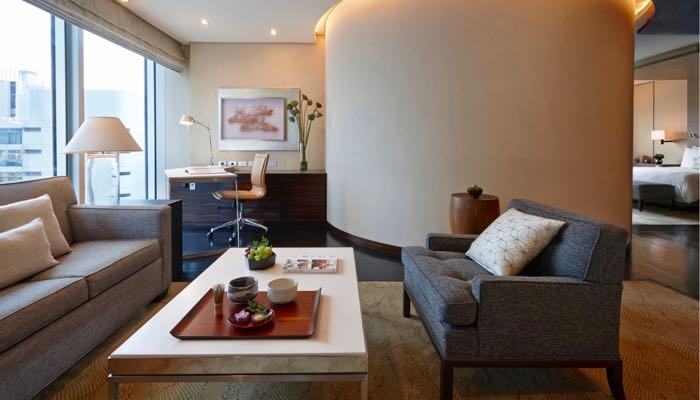
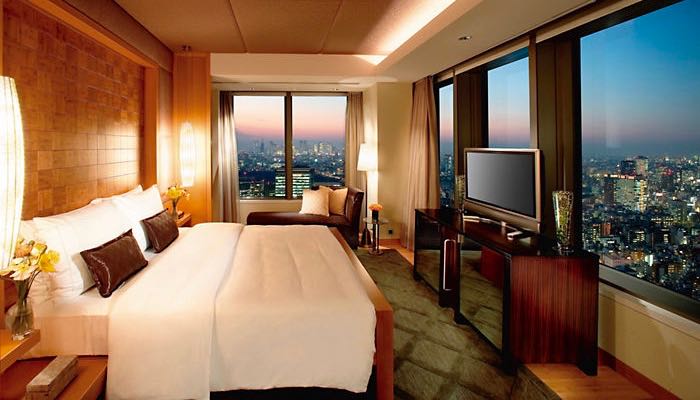
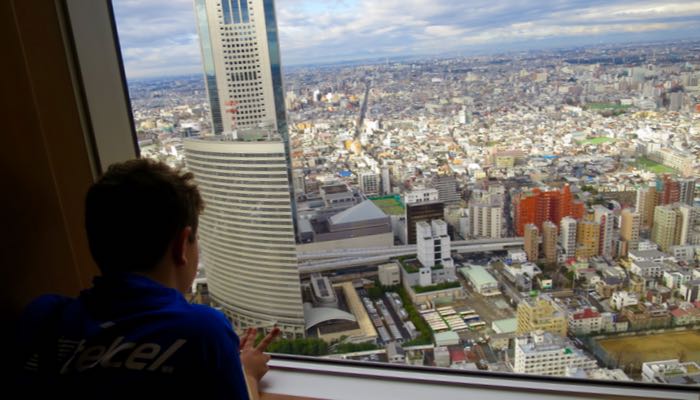
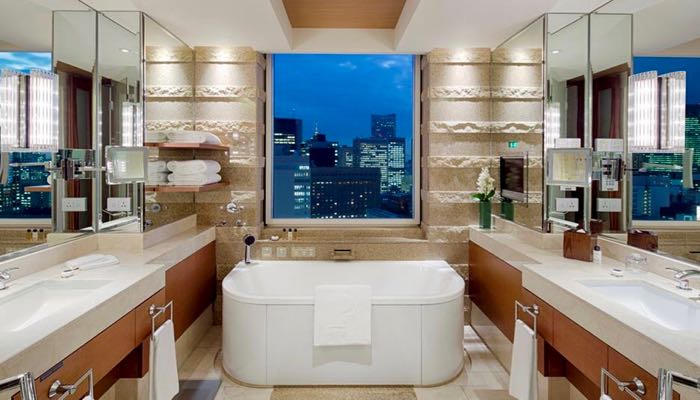
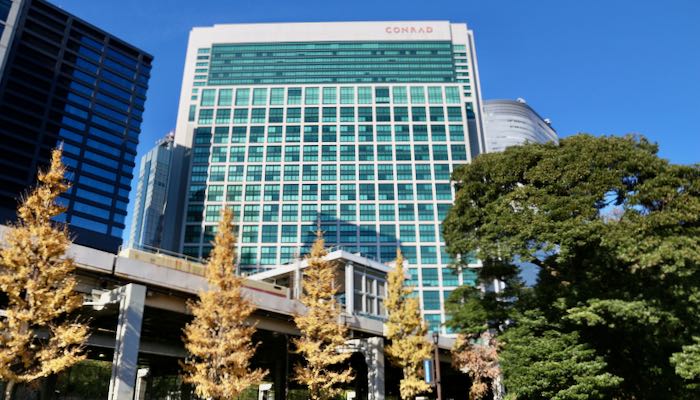
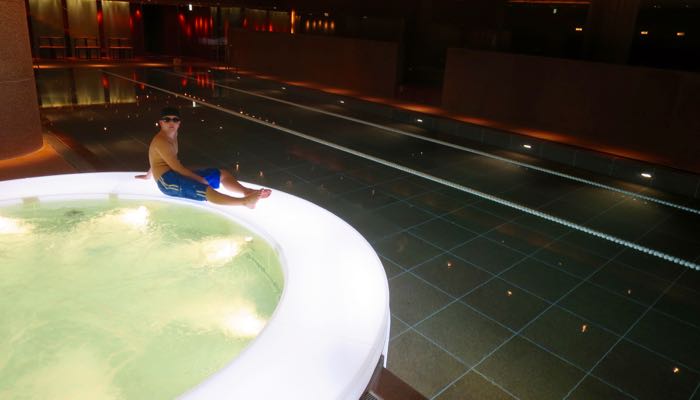
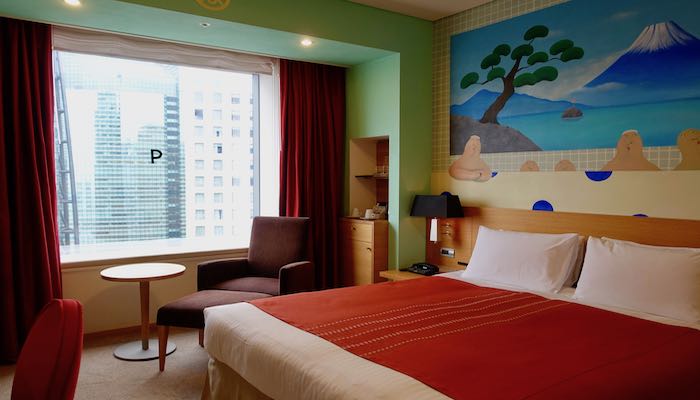
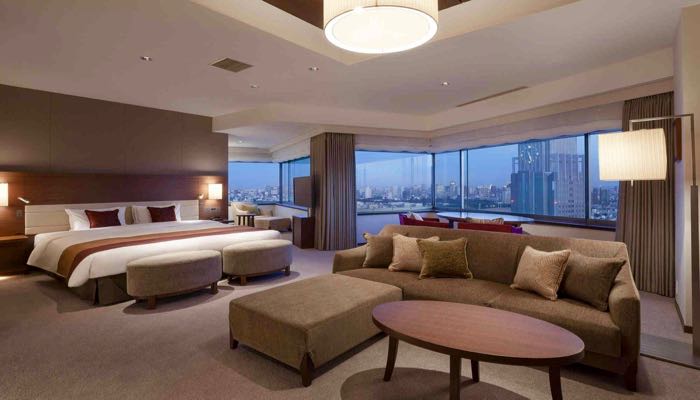
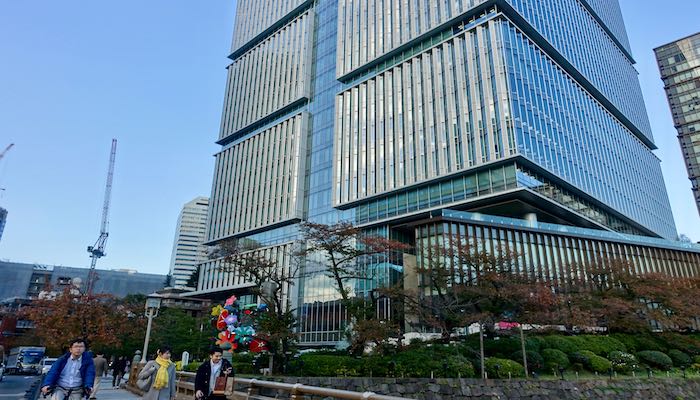
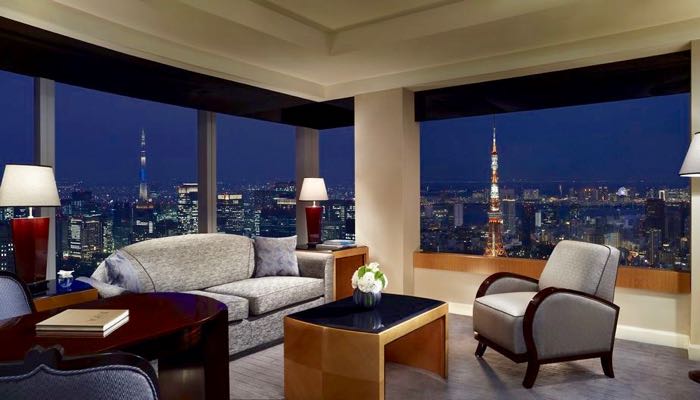
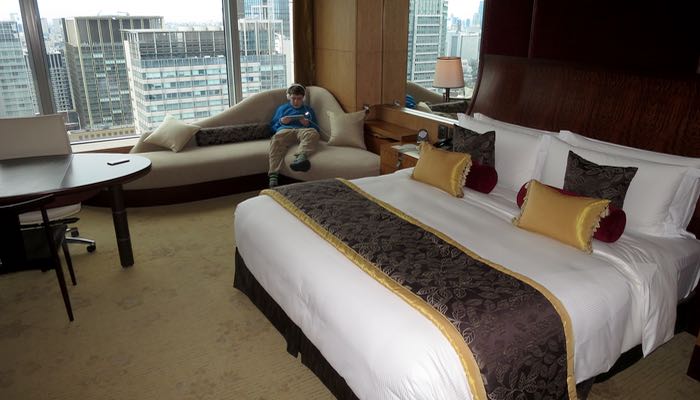
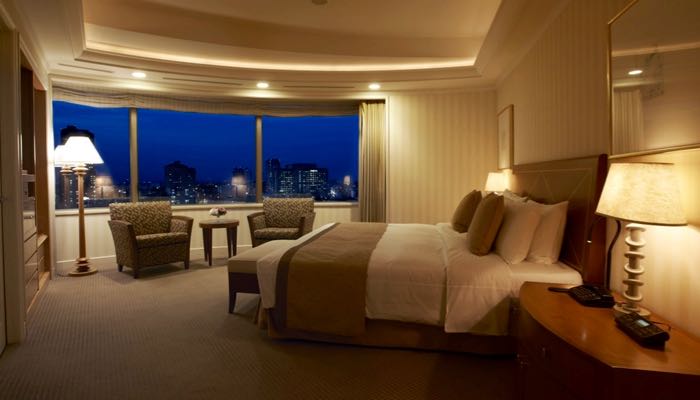
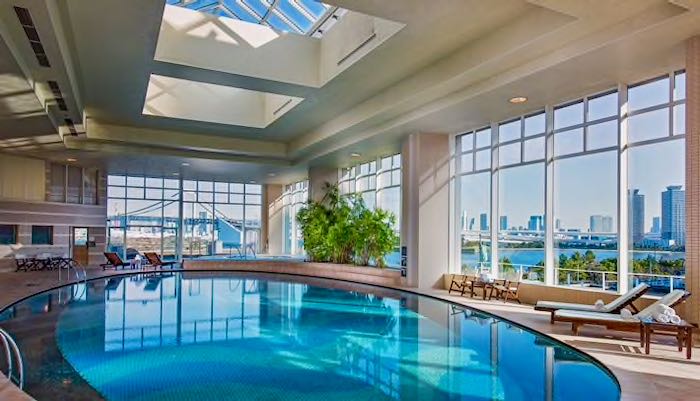
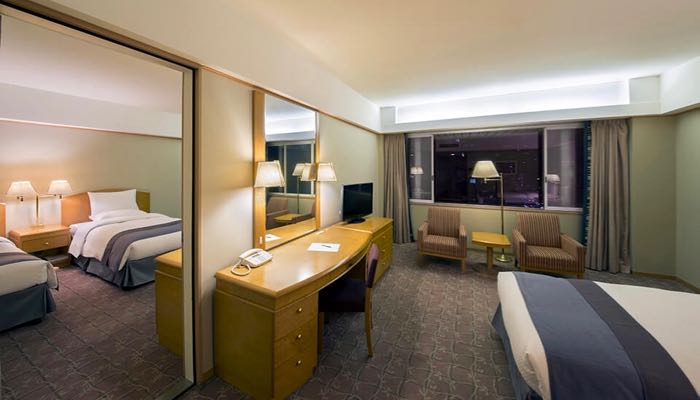
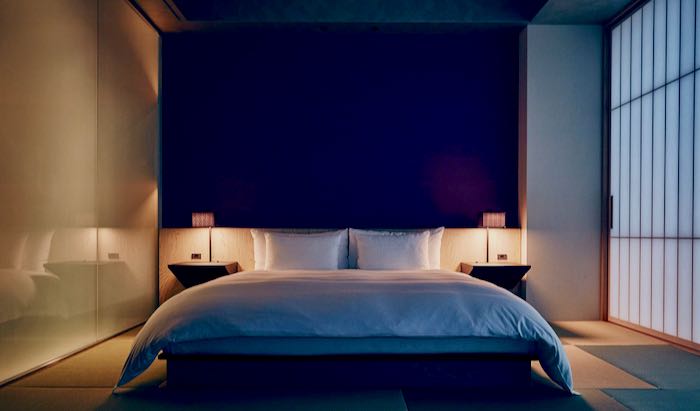
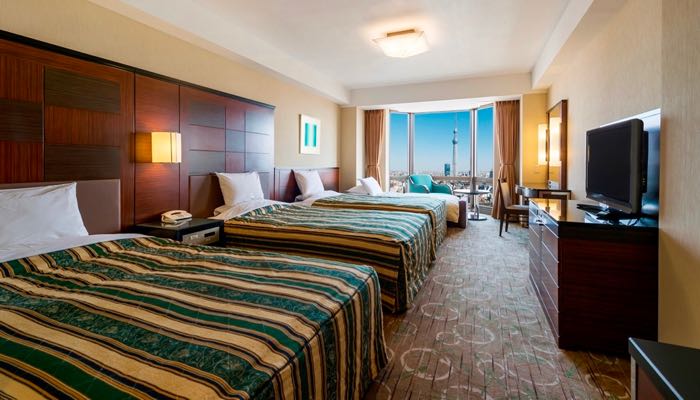
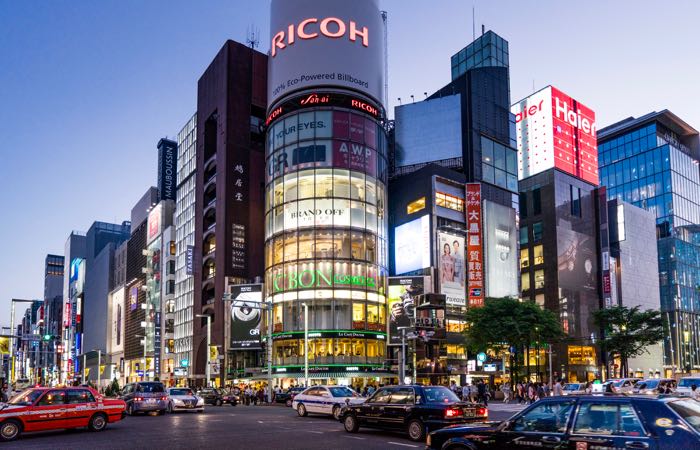

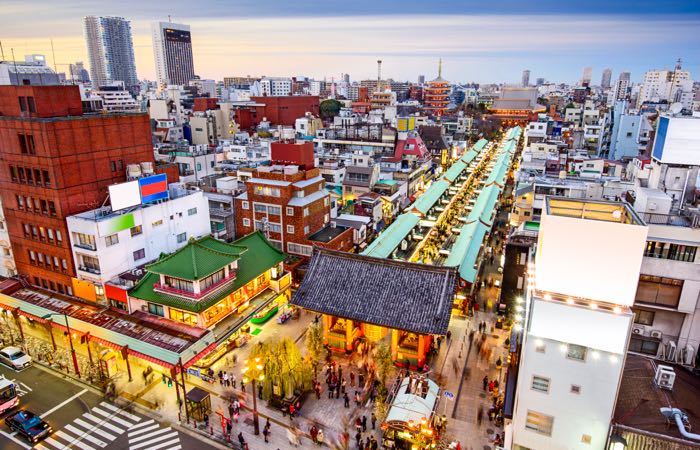
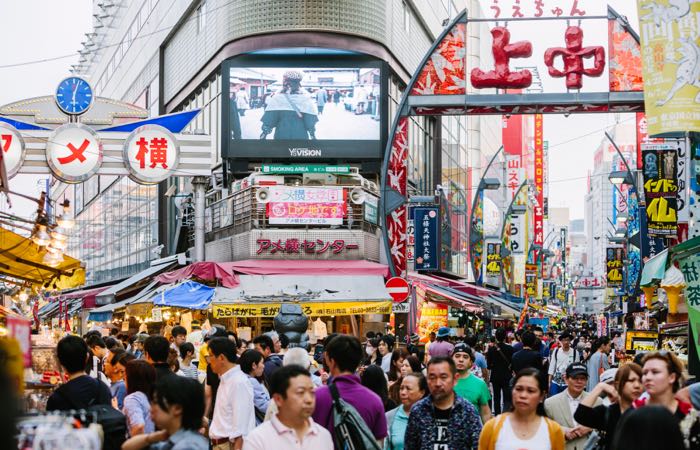
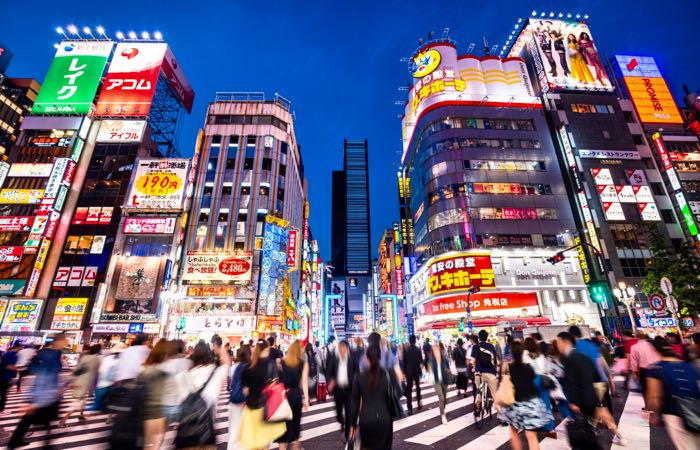
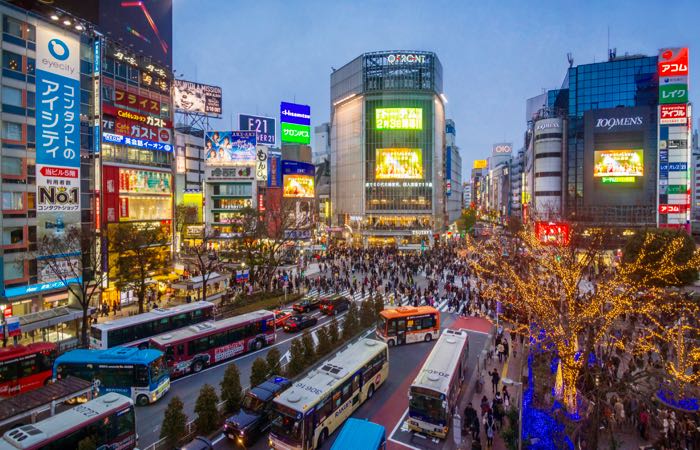
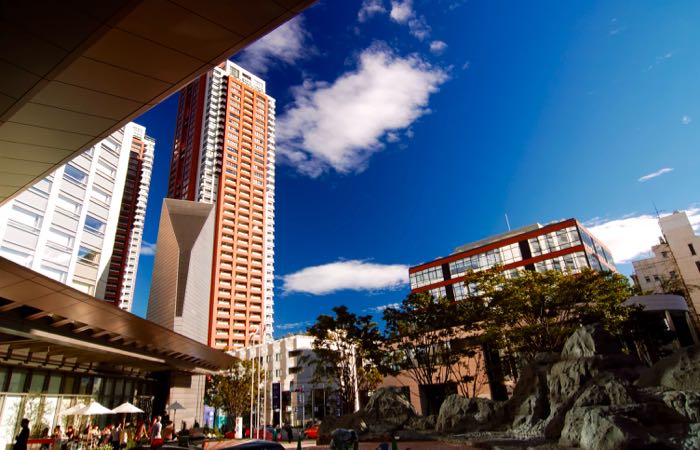
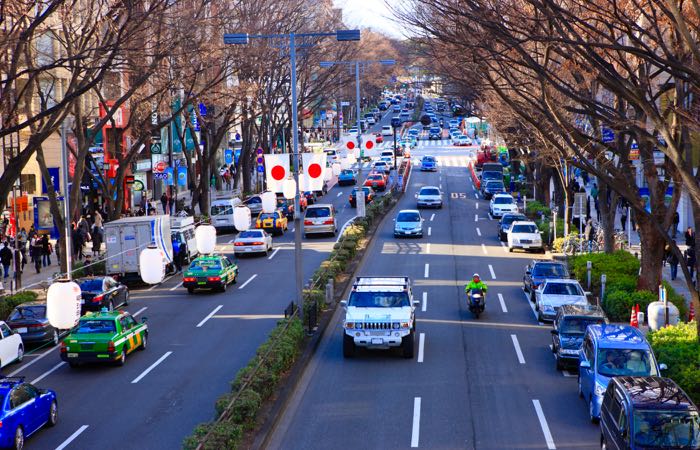
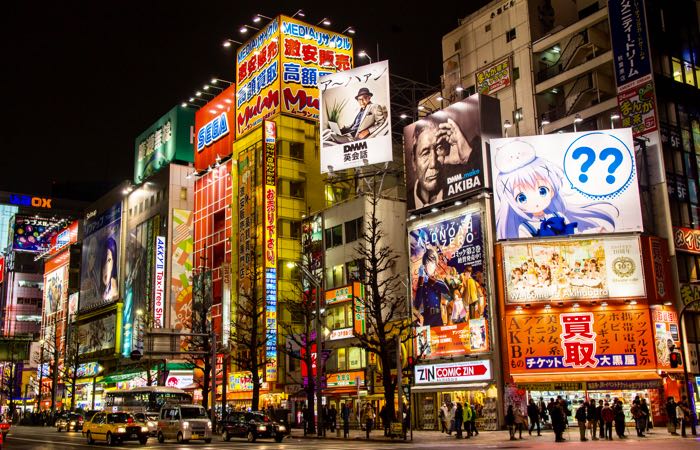
 Santorini Dave was started in 2011 when I posted a short guide to visiting Santorini with kids. Now, my site publishes regularly updated guides to
Santorini Dave was started in 2011 when I posted a short guide to visiting Santorini with kids. Now, my site publishes regularly updated guides to
I’m intrigued by the idea of staying in a ryokan for an authentic Japanese experience. But I’m also worried it might not be comfortable. For a first trip to Tokyo, what do you recommend?
For your main stay (the days you’re focused on sightseeing) in Tokyo, book a modern, Western-style hotel.
Hotels offer the convenience and comfort you are used to: beds, private bathrooms, flexible check-in, and no curfews. This is what you want after a long day in a bustling city.
Ryokans (traditional inns) are a cultural experience. They involve sleeping on futons on tatami-mat floors, elaborate multi-course meals (kaiseki), and often communal baths. They are fantastic, but the best and most authentic ryokans are found in hot spring towns like Hakone or historic cities like Kyoto.
My recommendation: Get the best of both worlds. Stay in a comfortable hotel in Tokyo. If you want the ryokan experience, take a one or two-night trip out of the city to a dedicated onsen (hot spring) town.
What’s the best area of Tokyo for nightlife and bars? Are Tokyo bars like western bars (cover charge or expensive drinks)? Do any bars have dancing? Is there anything you have to watch out for? – We’re a couple in our early 30s.
Tokyo has many areas for nightlife, with the most well known being Roppongi, Ginza, Shinjuku and Shibuya. Roppongi is the most cosmopolitan, attracting tourists and locals alike, both Japanese and foreigners, in all age groups. It has many Western-style bars, including fancy cocktail lounges, grungy pubs and dance clubs. Note that dance clubs, such as Odeon in Roppongi, cater to a young 20ish crowd, though you certainly won’t feel out of place. Targeting slightly older partyers, including young professionals, is R2 Supper Club. A popular hangout for after-work drinks is Rigoletto Bar & Grill.
Ginza is Japan’s swankiest address, with prices to match. Try Bar Orchard Ginza to witness how seriously bartenders attend to their mixology and concoctions. Shibuya is somewhere in between Roppongi and Ginza, buzzing with commuters and with both Western-style bars and Japanese pubs. Ruby Room is a long-standing music venue about the size of a commuter train and is very much worth checking out.
Shinjuku is Tokyo’s craziest nightlife scene. Kabuki-cho is packed block after block with bars, restaurants, clubs, strip shows and more. It’s worth a spin through just for all that neon. Farther east is “Golden Gai,” a warren of narrow alleys lined with impossibly small bars (Albatross is a perennial favorite). Farther east still is Shinjuku Ni-chome, Japan’s (and even maybe Asia’s) largest gay and lesbian nightlife district. It’s a huge street scene most nights of the week, with Arty Farty dance club open to both men and women of all persuasions.
Otherwise, there are so many great places to spend an evening. Be sure to ask the concierge where you’re staying whether there’s a place to recommend in your neighborhood.
My husband and I are traveling to Tokyo in August. We land at 2pm on our first day and then will have two full days in Tokyo before taking the bullet train to Kyoto.
I would love your advice regarding where to stay! Since we only have limited time, we feel like we need to stay somewhere that’s somewhat convenient. Great views are a high priority for us! As is proximity to delicious casual and nicer restaurants.
Areas on our itinerary to explore are Asakusa, Tsukiji, Shibuya, Harajuku, Omestando, Shinjuku, Roopongi and hopefully Ginza.
Based our trip, would love to hear your thoughts regarding these hotel options.
Andaz – Toranoman Hills
Park Hyatt – West Shinjuku
Grand Hyatt – Roppongi
Ritz – Roppongi
Shangri-La – Marunouchi
Mandarin – Marunouchi
Peninsula – Ginza
Conrad – Shiodome
We really like the Andaz but are a bit worried about the location given the amount of time we’ll be in Tokyo. Would love to know your thoughts on this as well.
Thank you, Dave!
The Shangri-La wins hands-down for convenience and location. Steps from Tokyo Station and the Narita Express train from the airport, subway lines for getting around the city, and the Shinkansen to Kyoto. The Peninsula (of the ones you list) would be runner up. The Four Seasons also has an excellent location (basically the same as the Shangri-La only it’s on the south end of Tokyo Station and the Shangri-La is on the north end). The Park Hyatt is my favorite hotel in Tokyo, unfortunately it’s not super convenient for the trains and subways – usually not a deal-breaker but with such limited time you’re better off at the Shangri-La (or Four Seasons).
Hi, I am looking to travel to Tokyo early next year with a few friends. Struggling to find a decent hotel at a good price. What would you recommend? I’ve had a look at Tokyo Dome hotel. What are your thoughts?
Thanks
Tokyo Dome is well located (restaurants, activities, baseball, subway) and has good prices. A favorite of mine in the moderate category is the Mitsui Garden Shiodome – good cheap curry restaurant right across the street, nice japanese bath on the top floor, and an easy walk to a couple different subway lines.
We have three nights in Tokyo in late November
If we were going to splurge on one of the following – how would you help us decide?
4 Seasons
Park Hyatt
Mandarin
Shangra-La
The Peninsula
Thanks!
The Park Hyatt is my favorite hotel in Tokyo. It’s awesome – and just a very special place to stay. The one small downside to the Park Hyatt is that there’s not much right out the door. The Shinjuku area (and station) is a short walk away but you’ll probably end up taking a taxi most places. The best located of those 5 hotels is the Peninsula, very close to Yurakucho station, which is one of the best and funnest areas to eat in Tokyo. There are a bunch of cheap restaurants under the train tracks that are just stunningly delicious. The Four Seasons is pretty close to this area too and it’s a good choice if you’re looking for a smaller hotel. The Four Seasons and the Shangri-La have great views of Tokyo Station and super-easy access to the train to Narita.
Trying to make up my mind among the Palace Hotel, Capital Hotel, or Park Hotel. Good fitness center. Any other suggestions.
Brigid McDonough
They are all nice hotels so can’t really go wrong with any of them. The Palace Hotel is most convenient for Shinkansen and airport train. Park Hotel is short walk to some great (inexpensive) food around Shimbashi station.
My wife and myself will be in Tokyo for a week (it’s a half-time work, half-time play visit so we’ll have plenty of time for exploring). We are very much foodies and would love to seek out some eclectic and interesting places and restaurants. What areas of Tokyo (i.e. neighborhoods) would you recommend? Any particular restaurants worth seeking out or is wandering and sampling the best approach? Budget and costs are not really an issue for us. We know the basics of Japanese food but are far from experts (so any little tips would be wonderful). Thanks!
Bob
One of the great things about dining in Japan is that restaurants are uniformly good, whether it’s a small family-run operation around the corner of your hotel or a high-end establishment in a high-rise. No wonder that Tokyo has more Michelin-starred restaurants than anywhere else in the world and that Japanese cuisine is on UNESCO’s Intangible Cultural Heritage list. And just like there’s more to American food than burgers and steaks, there are many more types of Japanese cooking than sushi, ramen and teppanyaki. Among the must-eats in Japan are kaiseki (a meal fit for an emperor with various small dishes of seasonal foods, including, perhaps, sashimi, tempura, grilled fish, etc.), tempura and kushiage (differently prepared but essentially breaded, deep-fried morsels), okonomiyaki (a pancake-like meal filled with meat and vegetables served with a Worcestershire sauce), shabu-shabu and sukiyaki (beef slices cooked at your table along with vegetables and dipped in a sauce), tonkatsu (deep-fried pork filets), yakitori (skewered, grilled chunks of chicken, vegetables and other items often served in a Japanese-style bar), and much, much more (each region also has their own local cuisines). You also don’t want to avoid restaurants serving French, Italian and other ethnic cuisine, these can be as good as anything you’d have in Europe.
Because Japanese homes are generally too small for entertaining, there are tens of thousands of restaurants and bars in Tokyo for socializing. Unsurprisingly, many of these are concentrated around big stations catering to commuters, including Shinjuku, Shibuya, Tokyo and Ueno stations. There are also countless possibilities in neighborhoods where tourists are likely to be, like Asakusa, Ueno, Roppongi and Harajuku. It’s certainly fun walking around and being spontaneous, though choices can be overwhelming and there isn’t always English signage nor menus. Otherwise, because of the time factor and the overall excellence of Japanese cuisine, it may not be worth traveling an hour just for a meal. For the area around your hotel, the concierge can be an excellent source of information; plus, many of Tokyo’s best restaurants are in its expensive hotels. The top floors of Tokyo’s skyscrapers are also often devoted to restaurants, many with great views.
Great restaurants by neighborhood in Tokyo:
Roppongi
Hinokizaka – Kaiseki on the 45th floor of the Ritz-Carlton
Inakaya – Touristy but fun robatayaki restaurant where foods are cooked in front of you
Tokyo Shiba Toufuya Ukai – Elegant tofu restaurant in gorgeous, garden setting
Fukuzushi – High-end sushi restaurant
Shinjuku
New York Grill – On the 52nd floor of the Park Hyatt (of Lost in Translation fame) serving steaks and one of Tokyo’s best weekend brunches
Tsunahachi – Famous and modest tempura restaurant
Ginza
Andy’s Shin-Hinomoto – This hole-in-the-wall yakitori restaurant under the tracks is owned by a Brit married to a Japanese and is filled to the brim with Japanese businessmen; reservations a must
Ten-ichi – expensive and well-known tempura restaurant
Asakusa
Waentei-Kikko – Kaiseki restaurant in traditional Japanese house with live music performances
Chinya – Shabu-shabu/sukiyaki restaurant since 1880
Ueno
Innsyoutei – Old house in Ueno Park serving kaiseki and box lunches
Aoyama
Two Rooms Grill/Bar – Upscale, sleekly decorated restaurant and bar offering Continental cuisine and specializing in Wagyu beef
Maru – Tiny bar serving nouvelle Japanese cuisine
Maisen – One of Tokyo’s most famous tonkatsu restaurants, ensconced in a former public bathhouse
My husband and I have 4 nights in Tokyo (on our way to Thailand). We’d love to stay in a big bustling district of Tokyo. Sort-of the Tokyo you see in the movies with the bright lights and busy crossings. We’re open to spending 2 nights in one area, and 2 nights in another. Where would you recommend to stay? And (I know Tokyo is expensive) any good mid-range hotels in those neighborhoods?
Bren
If you’re talking about Tokyo’s bright lights and busy crossings depicted in the movies, maybe you’re referring to Lost in Translation. Since both Shibuya and Shinjuku, below, have locations close to public transportation and offer similar shopping, dining and nightlife, you’re probably better off staying put rather than spending time changing hotels. That being said, if you want to see a contrast between old and new Japan, consider staying one or two nights in Asakusa.
Shibuya: This is the location of Japan’s most famous intersection, with video billboards, neon and hordes of pedestrians merging toward each other when the lights change and now a tourist attraction due to the movie. The Tokyu corporation owns a railway line and many stores in Shibuya, so it’s not surprising they own hotels here as well. The Shibuya Excel Hotel Tokyu is right across the street from the station (ask for a room on a higher floor facing Shinjuku for the best night views). Tokyu Stay Shibuya is a 10-minute walk from the station and slightly cheaper but has the benefits of in-room kitchenette and even washing/drying machine. You might also try Shibuya Hotel EN, about 8 minutes from the station and offering small but modern, spotless accommodations.
Shinjuku: Bill Murray and Scarlett Johansson stayed in the Park Hyatt in Shinjuku (my favorite hotel in Tokyo) – but there are far less expensive options. A great choice is Hotel Odakyu Century Southern Tower, with rooms on higher floors providing the most expansive views.
Asakusa: Before there were hotels there were Japanese inns (ryokan), and nothing conveys old Japan better than staying in a tatami room sleeping on a futon. Try Ryokan Asakusa Shigetsu just a few minutes’ walk from famous Sensoji Temple.